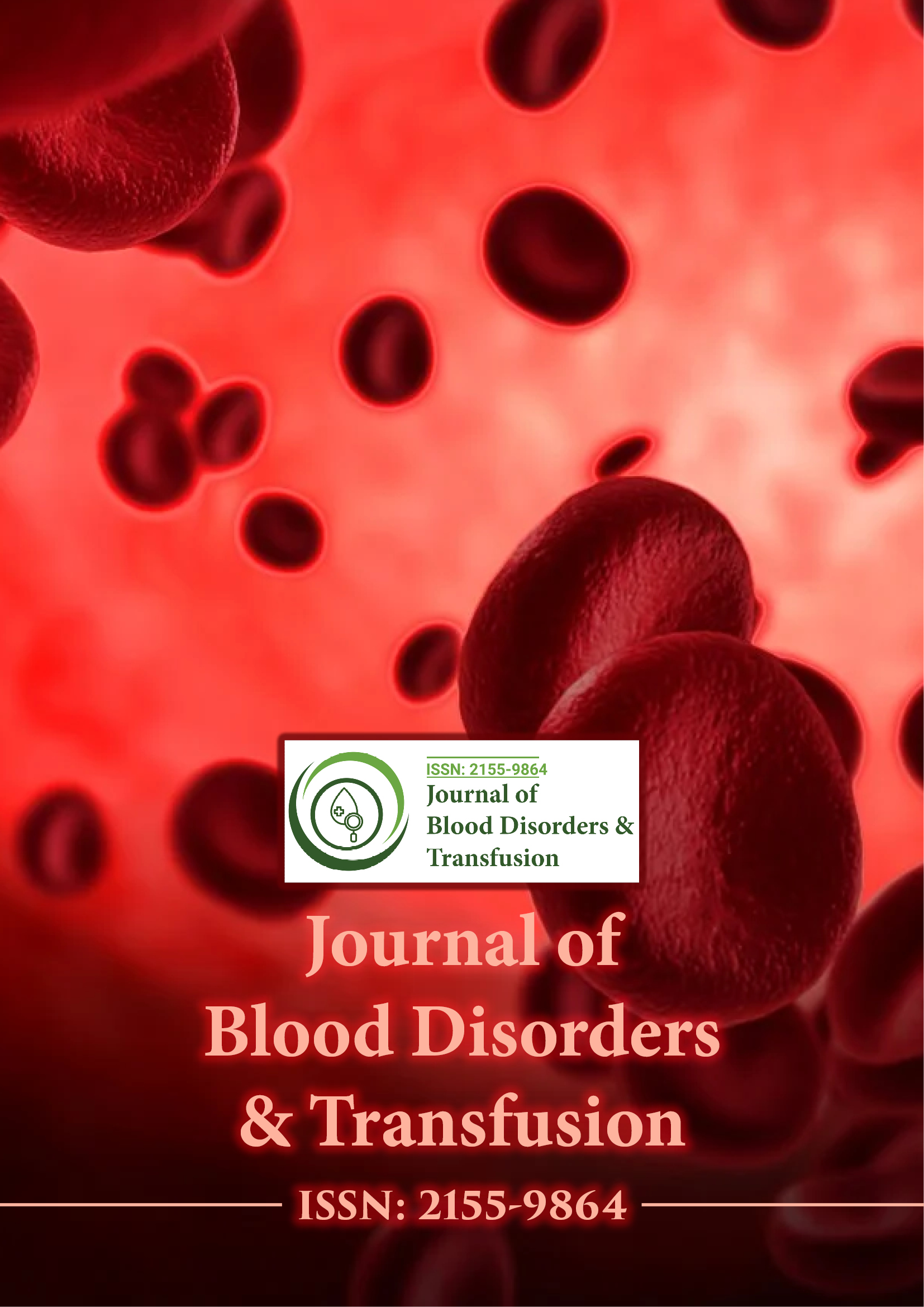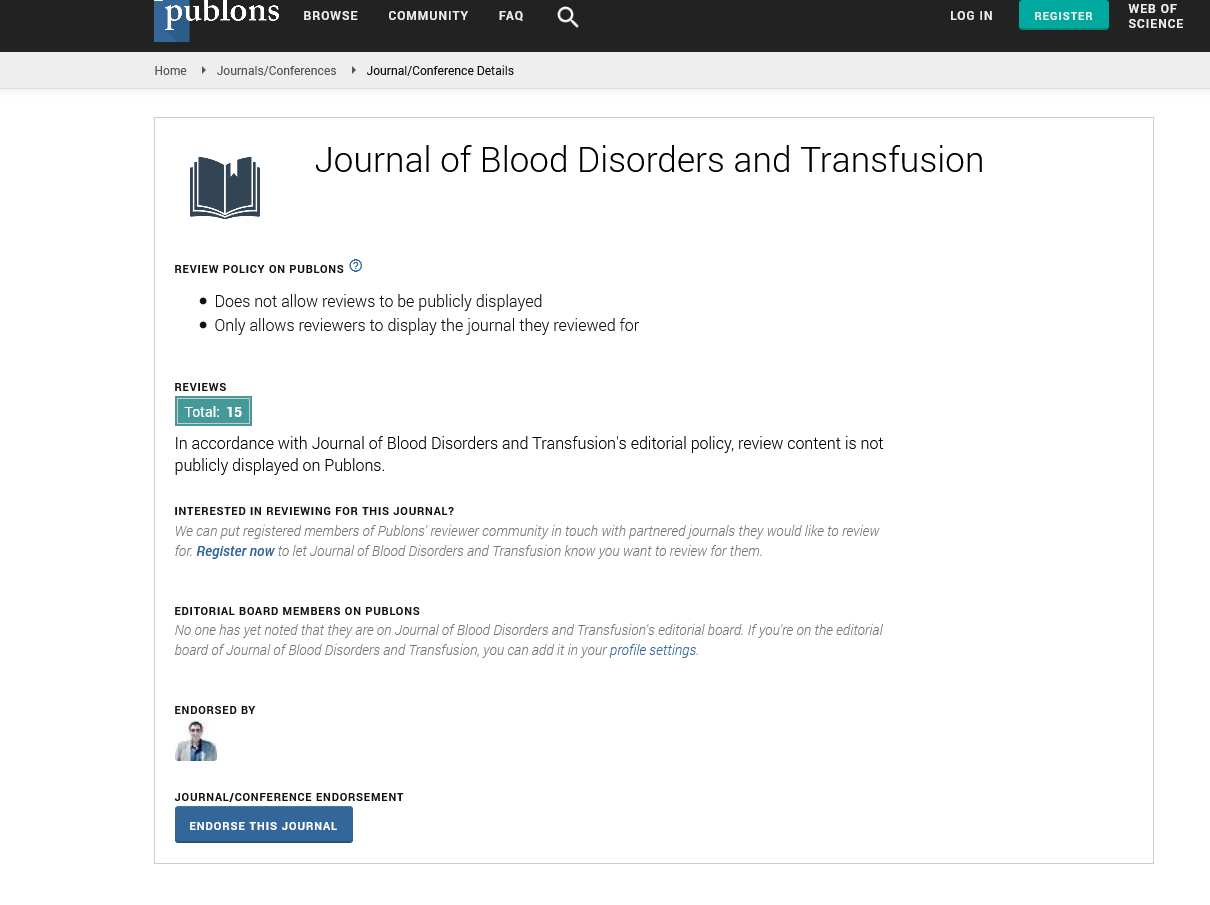Indexed In
- Open J Gate
- Genamics JournalSeek
- JournalTOCs
- Ulrich's Periodicals Directory
- RefSeek
- Hamdard University
- EBSCO A-Z
- OCLC- WorldCat
- Proquest Summons
- Publons
- Geneva Foundation for Medical Education and Research
- Euro Pub
- Google Scholar
Useful Links
Share This Page
Journal Flyer

Open Access Journals
- Agri and Aquaculture
- Biochemistry
- Bioinformatics & Systems Biology
- Business & Management
- Chemistry
- Clinical Sciences
- Engineering
- Food & Nutrition
- General Science
- Genetics & Molecular Biology
- Immunology & Microbiology
- Medical Sciences
- Neuroscience & Psychology
- Nursing & Health Care
- Pharmaceutical Sciences
Opinion Article - (2022) Volume 13, Issue 11
Information about the Various Blood Group Types, their Generation and Functions
Chomean Kaset*Received: 01-Nov-2022, Manuscript No. JBDT-22-18748; Editor assigned: 03-Nov-2022, Pre QC No. JBDT-22-18748 (PQ); Reviewed: 21-Nov-2022, QC No. JBDT-22-18748; Revised: 29-Nov-2022, Manuscript No. JBDT-22-18748 (R); Published: 07-Dec-2022, DOI: 10.4172/2155-9864.22.13.534
Description
A, B, AB, and O are the four primary blood groups. The genes we receive from our parents determine what blood group we will have. There are eight blood types in total because each group can be either Rh D positive or Rh D negative. The classification of blood based on the presence or absence of antibodies and hereditary antigenic compounds on the surface of red blood cells is known as blood type Red Blood Cells (RBCs). The blood group system may use proteins, carbohydrates, glycoproteins, or glycolipids as these antigens. Some of these antigens are also found on the surface of different tissue-specific cell types. One allele may give rise to multiple red blood cell surface antigens, which come together to form the blood group system.
Blood types are inherited and reflect the contributions of the person's parents. 43 human blood group systems are recognized by the International Society of Blood Transfusion (ISBT) as of September 2022. The two most crucial blood group systems, ABO and Rh, identify a person's blood type (A, B, AB, and O, with + or signifying Rh D status) and appropriateness for blood transfusions.
Blood grouping procedures
Every one of the 43 blood groups would have a complete blood type, and a person's blood type is one of numerous potential antigen-blood-group combinations. A person almost always has the same blood group for the rest of their lives, but very infrequently, an infection, a cancer, or an autoimmune disease will cause an antigen to be added to or suppressed, causing a change in blood type. A bone marrow transplant is one more frequent factor in blood type changes. For many leukemias and lymphomas, as well as other illnesses, bone marrow transplants are carried out.
When receiving bone marrow from a donor with a different ABO type, the recipient's blood type should eventually change to that of the donor as the recipient's hematopoietic stem cells (HSCs) are eliminated either by the donor's T-cells or by the ablation of the recipient's bone marrow. The new cells produced from the donor HSCs will have completely replaced the patient's original red blood cells by the time they have all died. The surface antigens of the new cells will differ from those of the patient's original red blood cells, provided the donor had a different ABO type.
Some blood types are linked to the inheritance of certain diseases; for instance, the McLeod syndrome is occasionally linked to the Kell antigen. One example of how blood types can affect infection susceptibility is the resistance to a particular species of malaria seen in people lacking the Duffy antigen. Population groups from regions with a high incidence of malaria have lower levels of the Duffy antigen, likely as a result of natural selection.
System of ABO blood types
Two antibodies and two antigens found in human blood make up the ABO blood type system. Antigens A and B make up the two antigens. The two antigens are antibodies A and B. Both the antibodies in the serum and the red blood cells include antigens. All humans can be divided into four groups based on their blood's antigen content: those with antigen A (group A), those with antigen B (group B), those with both antigens (group AB), and those with neither antigen (group O). The following antibodies are discovered alongside the antigens:
a) Antibody B with antigen A
b) Antibody A with antigen B
c) Antigen AB without antibody A or antibody B
d) Group O antigen deficient with both A and B antibodies
Rh blood group system
Among 50 antigens currently available, the Rh system—Rh standing for Rhesus—is the second most important blood-group system in human blood transfusion. The D antigen, out of the five primary Rh antigens, is the one that has the most impact since it is more likely to elicit an immunological response. Because anti-D antibodies are not typically formed by sensitization against environmental chemicals, it is common for D-negative people to lack any anti-D IgG or IgM antibodies.
The production of IgG anti-D antibodies, however, can occur in D-negative people after a sensitizing event, such as a blood transfusion with RBCs that are D positive or sporadically a fetomaternal transfusion of a pregnant woman's blood. Rh illness may manifest in these circumstances. Rh negative blood types are significantly less prevalent in Asian populations (0.3%) than they are in European ones (15%). The + or - sign denotes the presence or absence of the Rh (D) antigen, therefore, for instance, the A group is an ABO type A and lacks the Rh (D) antigen.
Citation: Kaset C (2022) Information about the Various Blood Group Types, their Generation and Functions. J Blood Disord Transfus. 13:534.
Copyright: © 2022 Kaset C. This is an open-access article distributed under the terms of the Creative Commons Attribution License, which permits unrestricted use, distribution, and reproduction in any medium, provided the original author and source are credited.

